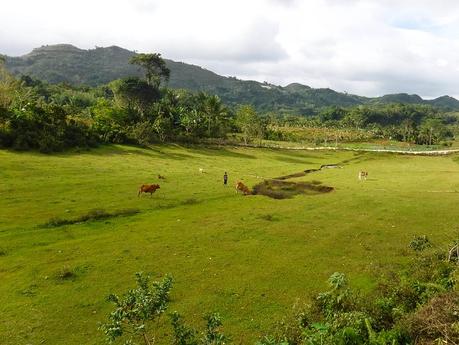
The mountains of southern Cebu are blessed with rich and fertile soil, cool climate, plenty of sunshine, and lots of moisture. Furthermore, locals have perfected the art of farming, the knowledge of the craft handed down from generation to generation. As such, southern Cebu is perfect for growing fresh vegetables of all kinds. The vegetables here are so high in quality that southern Cebu has now become the main source of the region’s vegetable supply. Segment 5 of the Cebu Highlands Trail took us across Cebu’s vegetable basket.
Our first stop was the Mantalongon Public Market in Dalaguete where we bought some vegetables for our dinner. You can just see how busy, noisy, and lively this place is. In fact, the market swelled to full capacity when we went there, and we had to squeeze past several bodies to check out the veggies we need.
It’s no surprise as Mantalongon is a major hub of southern Cebu’s vegetable industry. Every day, farmers from all over Dalaguete and the neighboring municipalities gather at the market to sell their crops to Lettuce, eggplant, tomatoes, peppers, cabbages, squash—you name it, the Mantalongon Market has it.
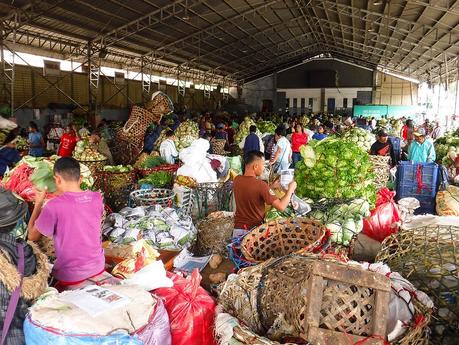
Freshly harvested vegetables are loaded to whatever vehicles farmers, middlemen, and wholesalers can muster. From huge cargo trucks to small multicabs, every inch of space is crammed with veggies.

Even more radical…and dangerous! How about two humongous bakags (baskets) tied to the sides of a motorcycle? Yes, it would be a delicate balancing act for the driver!
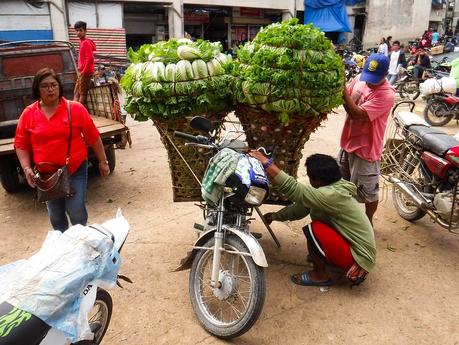
Wasting no time after buying the supplies we need, we started down the road that heads further and deeper south. While we met locals along the way, we also came across people carrying huge amount of vegetables to and from the market. And just check this out: a motorcycle driver strapping a bukag overfilled with vegetables to his—-yes, head! How crazy could that be?
Hey, it’s a Filipino trait: if it can be done, then it will be done! This trait is borne out of either creativity or desperation.
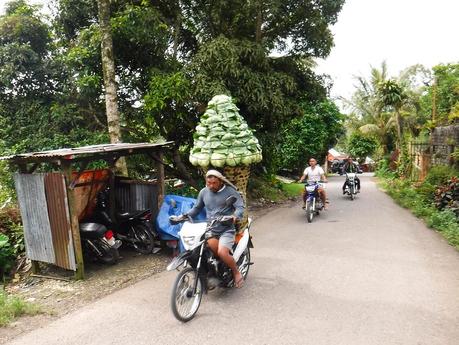
By and by, the scenery from a lively town changed. The farther we hiked, the more pastoral the scenery became. Houses were scattered all over the place, contrasting the dense residences in the lowlands. Vegetable farms, homes, and limestone cliffs blended together in a pleasant smorgasbord of sights.
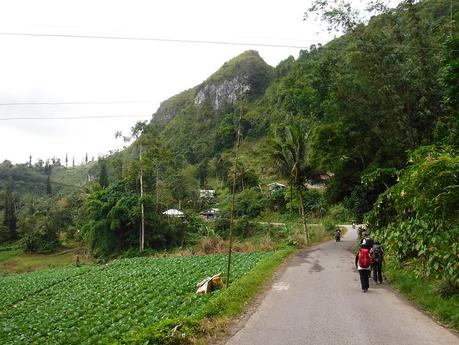
As we walked on the road, which forms half of Segment 5 of the Cebu Highlands Trail—this day’s hike, actually—we saw all kinds of vegetable farms on either side of the road. This farm features framed roofs that give freshly planted vegetables a refuge from birds who eat them.
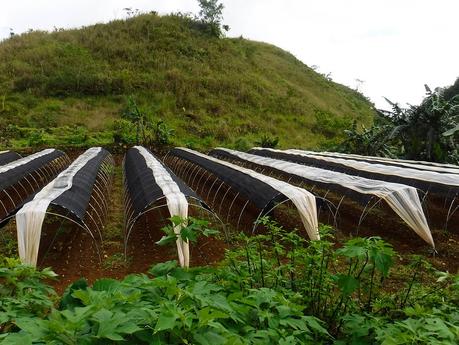
Rows upon rows of cabbage line up these old rock terraces. This kind of agricultural technique is called contour farming, which involves planting along the slope of a hill, mountain, or embankment and following its contour lines. Contour farming helps reduce soil erosion.
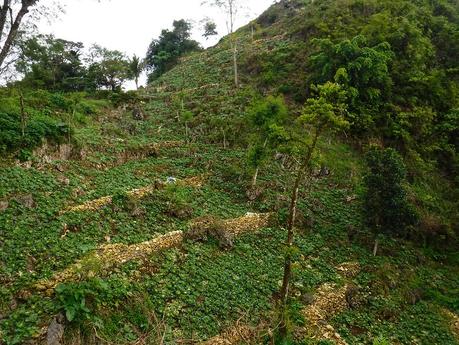
Since most of the arable land area here is plowed to make farms, locals must build other structures on pockets of spaces. Just check out that house precariously built on top of a contour farm. It must be a sweaty climb every time you come home from the office. Hahaha!
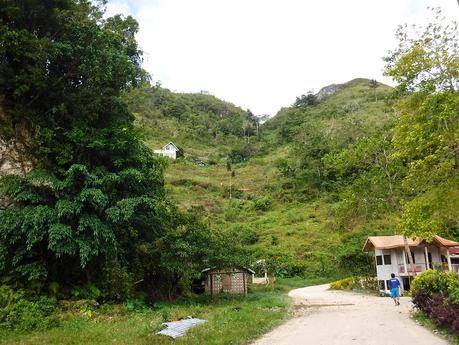
Some households do not plow farms for business. They plant vegetables for their own table. Just imagine: nutritious and delicious vegetables every day, freshly plucked out of your own backyard. Yes, despite modernity, locals are still quite self-reliant.
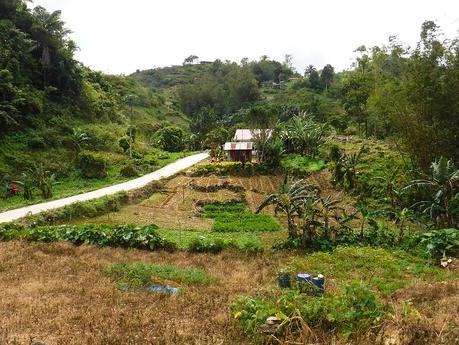
You really need to have Internet wherever you are…even up in the mountains! Hahaha! For non-Bisaya speakers, it says “Grandma’s Internet Place.”
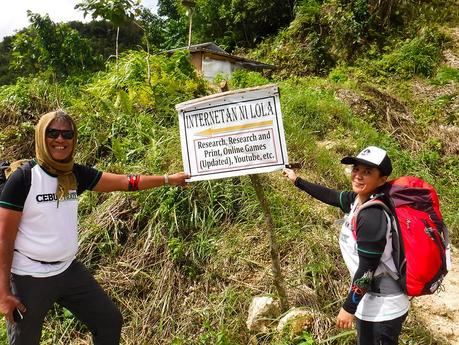
It’s really painful walking on hard, concrete or asphalted roads. But the nice thing about it is that we find rest stops everywhere! A few hours before mid-day, we stopped by this roadside bakery to munch on some bread and gulp ice-cold soft drinks. Small, short breaks like this really energize a hiker trekking the CHT.
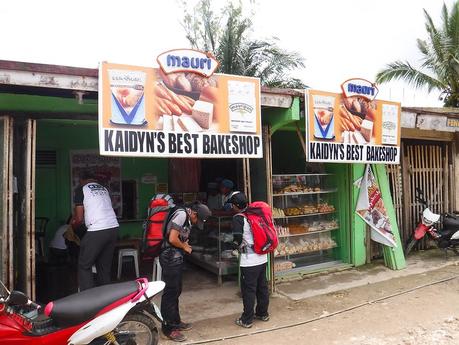
As we continued along the road, we quietly enjoyed pastoral scenes like this. Karst formations, which are truly abundant in southern Cebu, form protective walls for the farms and communities below. It is possible that there are undiscovered caves here due to the presence of limestone.
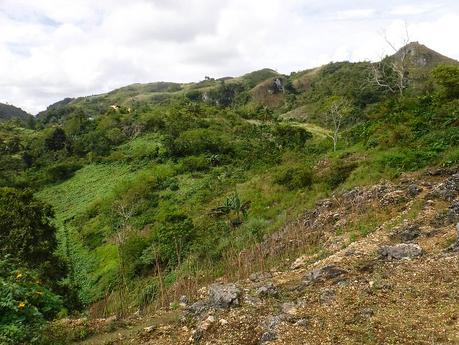
Simple life, great happiness! Rather than unproductively sinking their noses in cellphones, these kids whiled away the morning playing a game of basketball.
You can see makeshift basketball “courts” like these everywhere in the mountains. Yes, it’s safe to say that basketball is the Philippines’ national pastime.
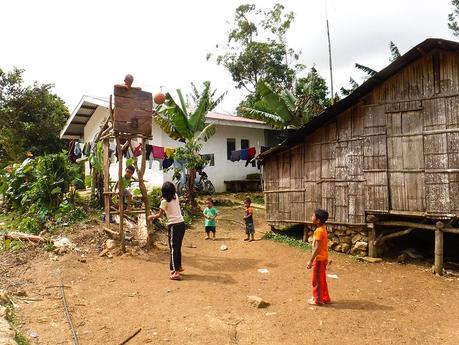
At mid-day, we came across a house. We took out our packed lunch and devoured them. Best thing of all, the house has a sari-sari store, and that means—ice-cold Coke! Wohooo!
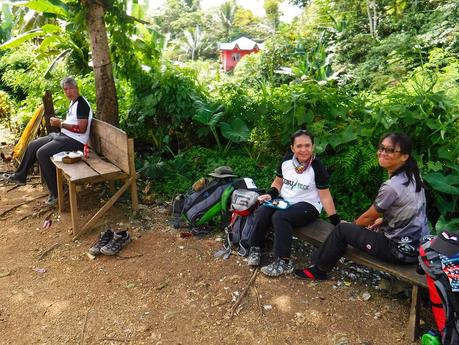
After a 30-minute break, it was time to continue down the long road to Alcoy. Although the sun was hot, the breeze flowing through the mountains was strong and refreshing.

Roosters enjoyed some shade under some broad banana leaves. Roosters are quite prized here because cockfighting—a blood sport that involves two roosters fighting to the death—is not just a past time. It’s gambling, and in many cases, the stakes are high. Sometimes, the stakes even go up to a million pesos!
To increase their chances of winning, specially bred roosters like this are fed with the best vitamins, supplements, and foods to increase their stamina, aggression, and strength. It has been a running joke—well, there’s some truth to it—that sabongeros (men who raise and care for these roosters) take very good care of their roosters that their wives actually get jealous!
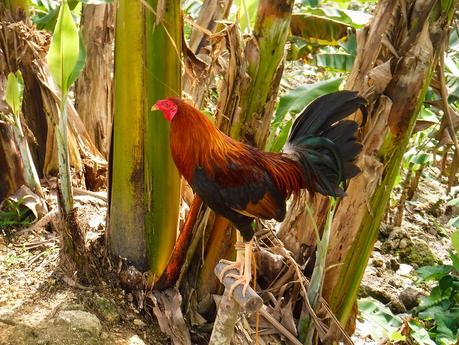
An auditorium? Nope, it’s a specially prepared and contoured farm for spring onions. Look at how green and fat the stalks are!
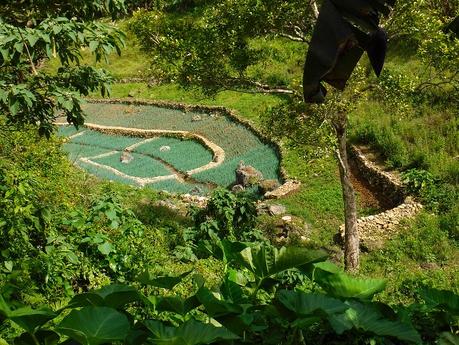
As we entered Alcoy, we stopped for a while across this thick wooded area. According to Sir Jing, this is one of the last few original rainforests in the Philippines—the Nug-as Forest. Protected via a local ordinance, the Nug-as Forest is a bird sanctuary, housing very rare endemic birds of Cebu. Many of these birds are threatened species.
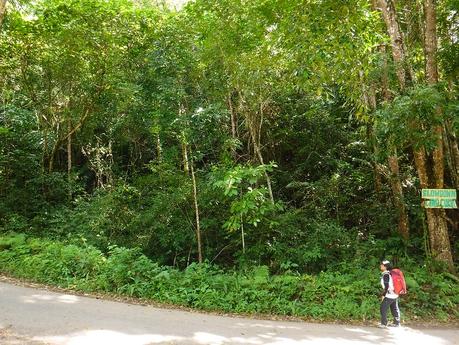
At 3 PM, 2 hours ahead of our itinerary, we reached our campsite, the Barangay Hall of Nug-as. We shrugged off our packs in their garage where we planned to set up camp.
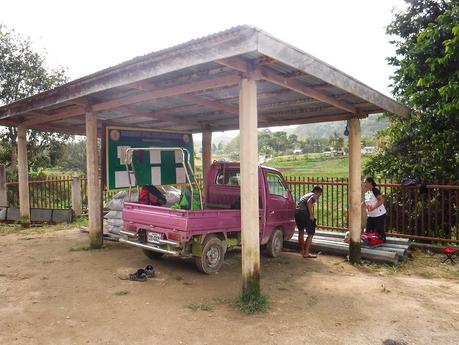
Just check out the view of from our campsite! That’s a very beautiful and green pasture! It reminded us of simpler times during our childhood days.
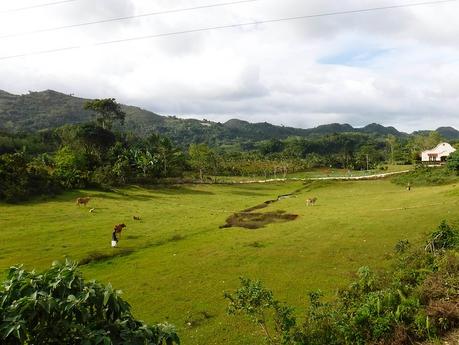
For a hot treat for a hike well done, we brewed some freshly ground coffee that we bought when we visited Sagada during our Cordillera Food Trip. Fresh coffee beats any instant coffee in the world! We passed around steaming, aromatic cups of coffee, and as soon as the first sip touched our lips, we knew were in heaven.
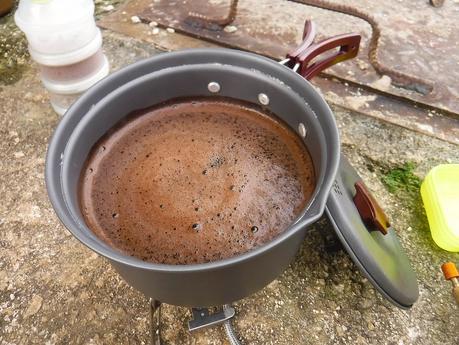
For dinner, we had a Filipino favorite called lechon paksiw (leftover roasted pig, bay leaf, onions, and garlic boiled in native vinegar and soy sauce) as our main dish. Because Apol is not a meat eater, we prepared an original dish for her—lightly sauteed shrimp, mushrooms, and garlic seasoned with salt and pepper. Yummy!
Oh, yeah, the vegetables we used for our dishes? Those are fresh from the Vegetable Basket!
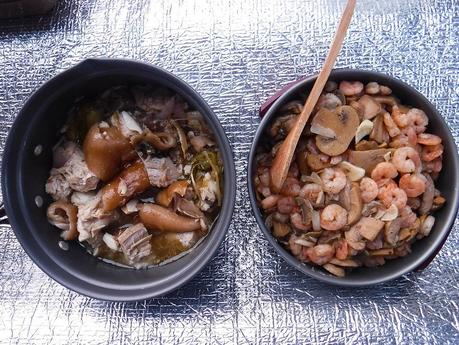
The barangay captain was gracious enough to invite us to camp in their unfinished health center instead. What a joy! That meant we can deploy our tents and hammocks without the need of a flysheet. We’ll be shielded against the cold mountain air.
And it turned out to be a fortune because later that night, it rained really hard. But we were comfortable, warm, and dry inside the enclosed space!
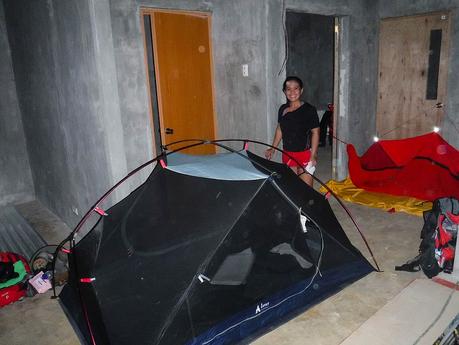
We love eating nutritious and delicious vegetable dishes. Seeing where they come from, how they’re planted, and the sweat that hardworking farmers go through to have them grown heightens our appreciation for the food on our table.
Watch out for Part 2 of this segment soon!

